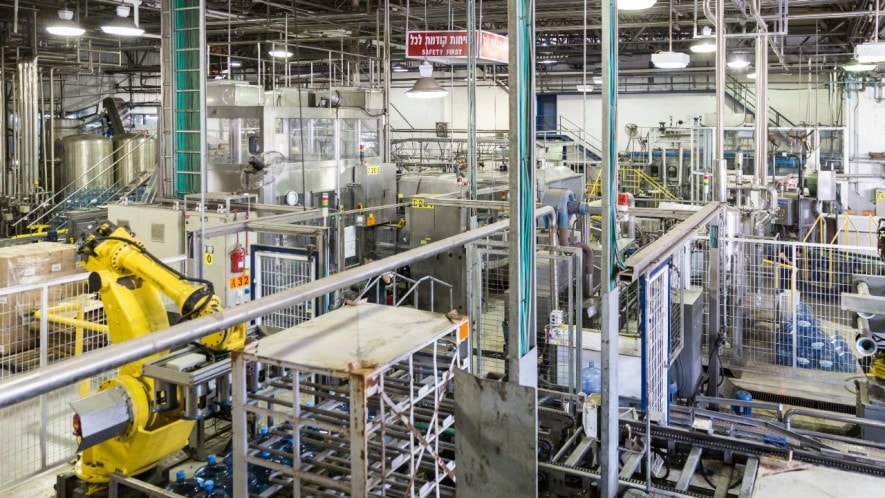The output figures used in our computations are presented in appendix 3A. Labor costs, as ---------- 8/ Due to the unavailability of info...
The output figures used in our computations are presented in appendix 3A. Labor costs, as ---------- 8/ Due to the unavailability of information from this source Tor 1976, a 15 percent price increase was assumed. 9/ It is known that natural gas constituted only 6.8 percent of Japanese energy supply in 1973 as contrasted to 30.6 percent in the United States (10, p. 12). -107- mentioned above, were normalized by the BLS, using physical output quantities with so"ie adjustlTlent for product mix. ,- -~ Resul ts Introduction. In discussing the results the following terminology will be employed. Price of input: as defined in the the da ta used. the pr ice of the input section above descr ibing Unit purchases of the input: .~the purchased quantity of the input (as decr ibed above in the discussion of the data) per metric ton of steel proouct output. Unit cost for the input: the price of the input times the unit purchases of the input. In other words, the average cost of the input to the country's steel industry per metr ic ton of steel product output. Figures 3.1, 3.2, and 3.3 show, for each of the past 21 years, the U.S. unit costs, unit purchases, and prices of the inputs studied relative to Japan's costs, purchases, and prices. Tables 3.1, 3.2, and 3.3 provide supporting numerical data. Figure 3.4 shows, for the U.S. and Japan, cumulative unit costs for all the inputs studied. Labor. The primary difference between U.S. and Japanese un i t steelmak ing costs is the unit cost for labor. The d i fference in un i t labor cost, in turn, is due pr imar ily to the labor wage rate differential. Between 1956 and 1961, the unit cost for labor in the U.S. generally increased relative to that in Japan.
Unit labor costs I in the U.S. increased ~s the price of labor increased and unit purchases failed to decrease correspondingly. In Japan, the pr ice of labor was increasing somewhat more rapidly than in the U.S. but labor productivity was increasing at roughly the same rate, allowing the Japanese fairly constant unit costs. From 1961 to 1966, unit labor cost in the U.S. declined somewhat, but there was no clear trend in the relationship between the U.S. and Japan. Decreasing unit purchases of labor continued to keep Japan's unit cost for IGbo~ roughly constant or declining slightly in the face of a labor price which continued to rise faster than the pr ice in the U. S. From 1966 to 1970, the U.S. unit cost for labor again rose relative to Japan's as the U.S. price rose and unit purchases of labor stayed fairly constant. From 1970 to 1974, the U.S. relative cost for labor declined to near the 1958 level. This reversal of trend occurred because the Japanese labor price continued to increase faster than the U.S. price, as it had since 1959; but the yearly reduction in Japan's unit labor purchases, which had been quite large prior to 1970, became smaller as Japanese labor productivity approached that of the U.S. In 1975, the U.S. relative labor cost increased as U.S. unit purchases rose above the 1973 level and Japan's price of labor failed to rise appreciably faster than that of the U.S. There was a further increase in the U.S. relative unit cost in 1976 as the Japanese showed a remarkably small increase in the price of labor. -119- The upturn in 1975 may not have signaled the end of U.S. improvement relative to Japan. It is possible that the upturn was, to some extent, a cyclical phenomenon. The decline in steel demand from 1974 to 1975 resulted in a nearly 21 percent decrease in U.S. steel production. In 1976, production was still less than 83 percent of the 1974 level. Although labor is classified as a variable cost, major changes in plant work forces are not made easily and unit labo~ 'cOst tends to rise as production is cut back. Japan also suffered a downturn in production from 1974 to 1975; but it was somewhat milder--
less than 15 percent. In 1976, the Japanese produced over 91 percent of the 1974 level. In the future, if the Japanese are unable to increase their labor productivity much beyond that of the U.S., ana if Japanese labor wage rates resume their earlier tendency to increase more rapidly than those in the U.S., improvements in relative unit labor costs could significantly improve the U.S. competitive position. Iron Ore. The U.S. steel industry's unit cost for iron ore generally increased relative to Japan's over the entire 20-year period examined. This occurred despite increases in Japan's unit purchases relative to those of the U.S. because of overr iding decreases in the relative pr ice of iron ore to Japan. Japan had a generally decreasing pr ice from 1956 through 1970; and even dur ing the past few years when Japan's pr ice increased sharply, it generally increased less sharply than for the U.S. The U.S. price of iron ore rose through most -120- of the period. Japan's unit purchases of iron ore increased relative to those of the U.S. due to generally decreasing unit purchases in the U.S. and generally increasing unit purchases in Japan. Japan's increase has probably been due to both a substitution toward iron ore from scrap and a shift toward lower quality ore. It should be noted that U.S. iron ore receives considerable upgrading at the mine site which is included in the price of the

No comments